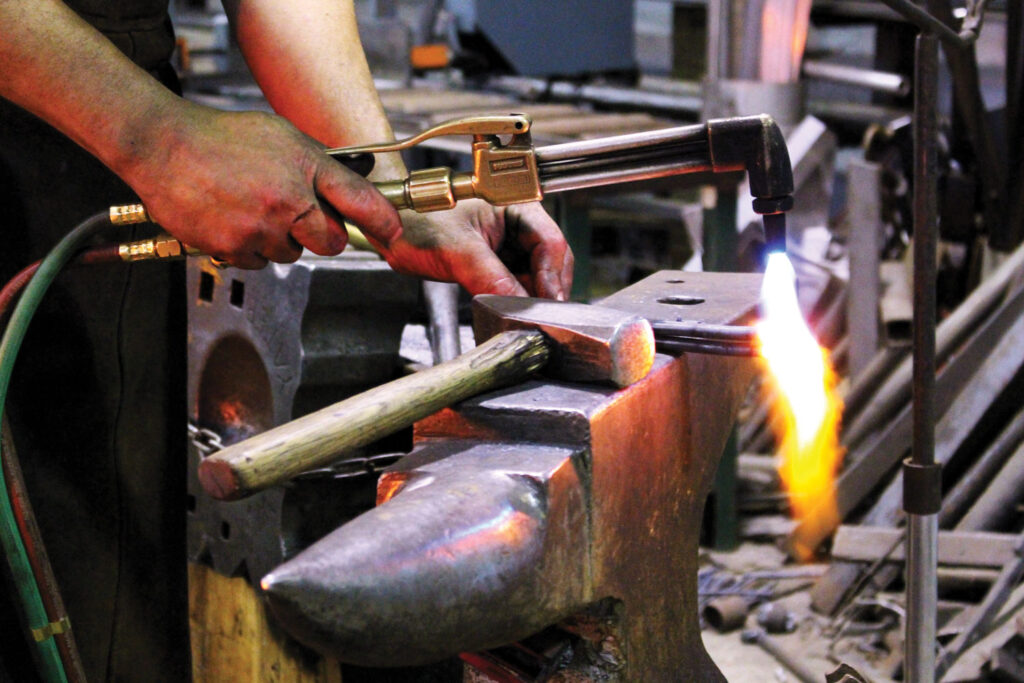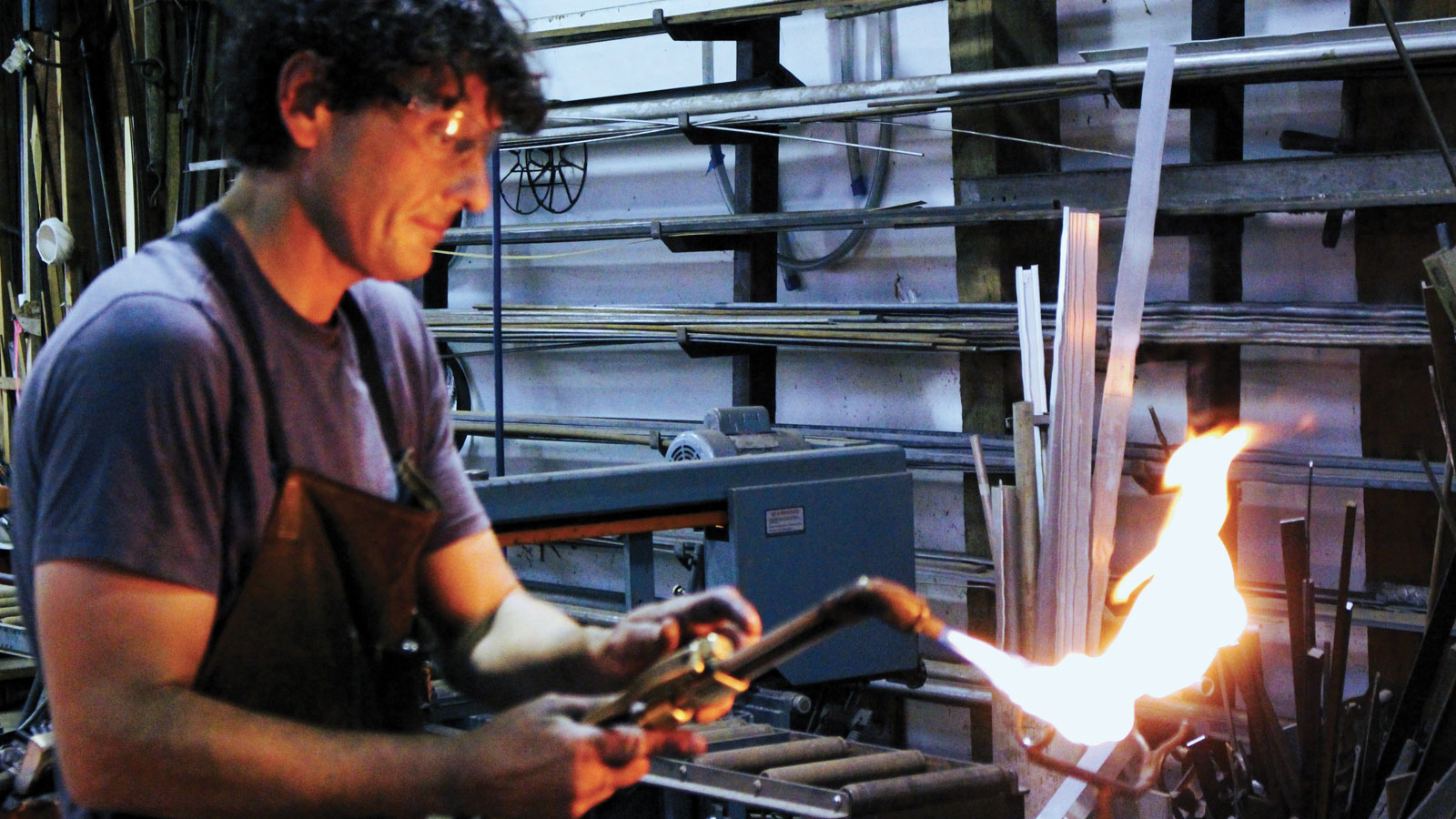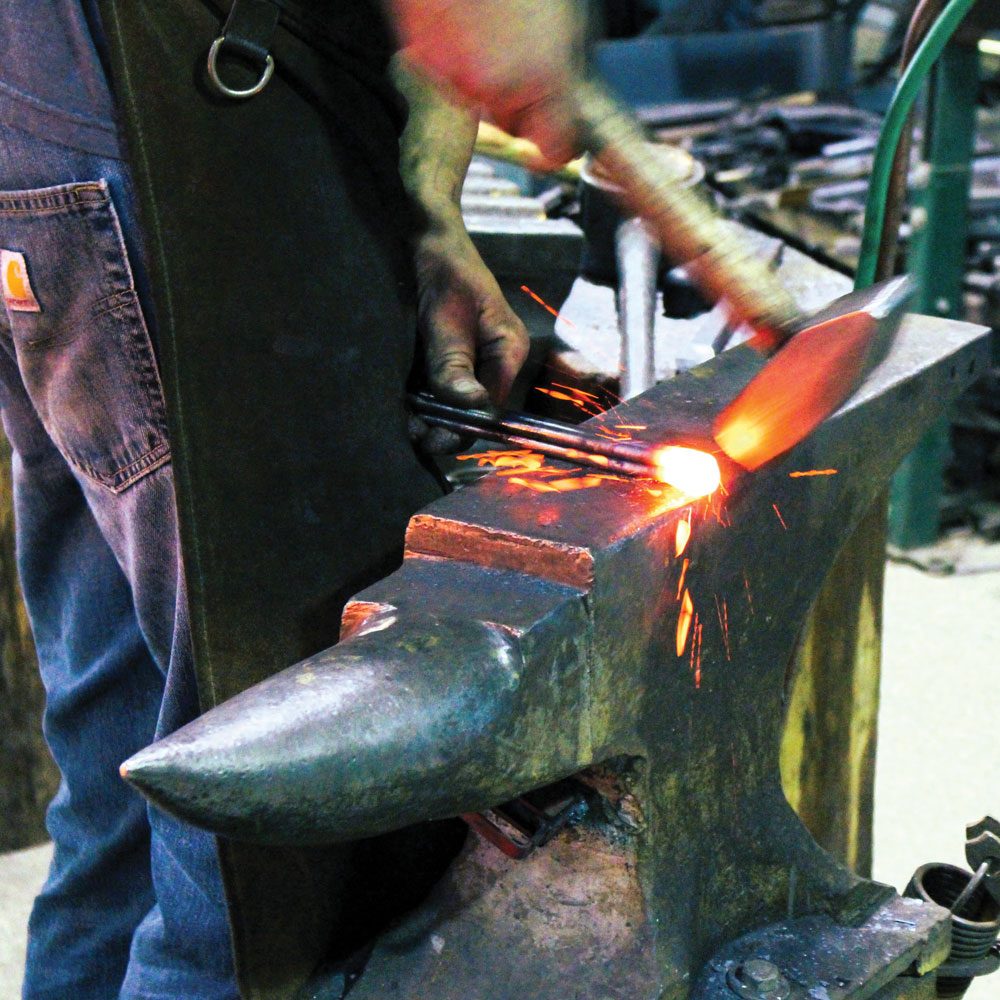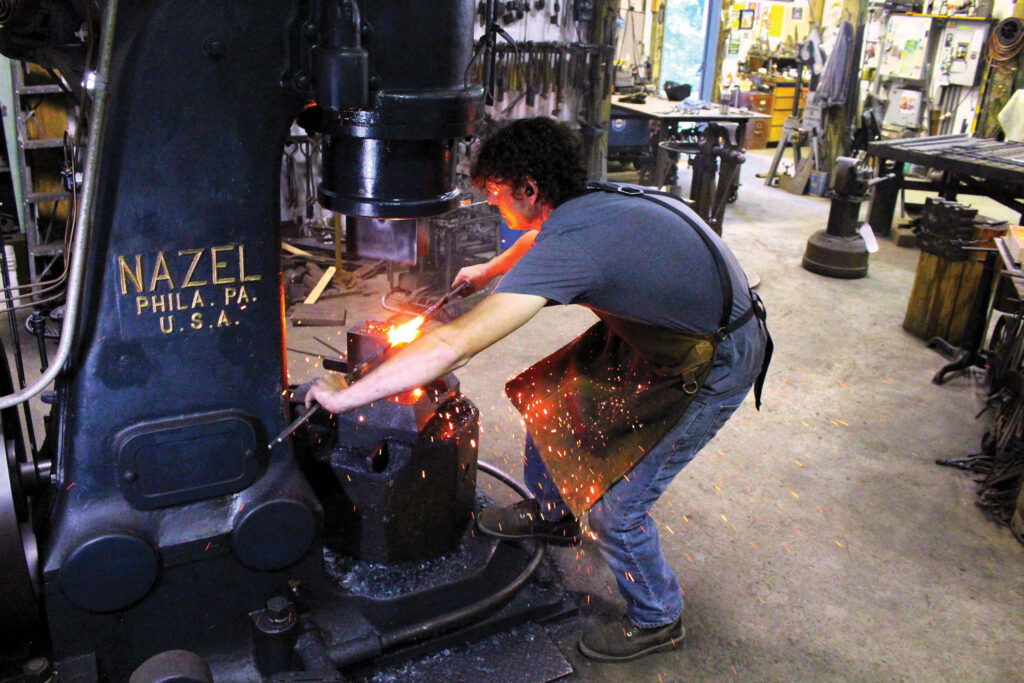Connections Forged in Steel
by Mary Reddy • Photos by Bijan MITCHELL
When Joey Guerra arrived on Whidbey Island seven years ago, he was not thinking of anvils, forges, or tongs. Family connections brought him to the island, and he soon found work as a carpenter at Hedgebrook, a renowned Whidbey Island writing retreat for women. Guerra also began to work for builder Matt Holtby on his tiny house, studio constructions, and remodels. Guerra eventually met Matt’s brother, Jeff Holtby of Arcane Metal Arts, who was considering closing up his business.
With Guerra’s enthusiasm for metal work, Jeff Holtby agreed to mentor him in the art and craft of the modern-day blacksmith. “I saw what he was doing and was interested,” said Guerra. In 2021, he began Northwest Metal Arts, renting Holtby’s workshop along with a plethora of impressive tools.
Off a winding gravel road and surrounded by trees, the exterior of the shop looks like any large farming or warehouse structure. The 3,000 square feet of studio space and a high ceiling allow ample room for the large blacksmith machines. An array of iron rods, tools, and finished and in-process projects hang from walls or are stacked on worktables. The forge sits front and center, glowing red around the edges of heat-resistant ceramic bricks. Its propane-fueled fire reaches temperatures up to 2,300 degrees. Heating the iron in the forge brings the steel to a clay-like, pliable state—a process more akin to glass blowing than welding.
A hulking, midnight blue power hammer stands near the forge. “This is the heart of the operation,” Guerra explained. With its power, this impressive piece of equipment does the work of four people. Towering above him, it can be mistaken for a Star Wars droid. The shape of the machine curving over the hammer has an anthropomorphic quality. The machine has had only one other owner prior to arriving on the island.
“It dates back to 1922, came out of an old paper factory in Everett,” said Guerra. “They don’t make these much anymore; maybe some are made overseas. Without a hammer like this, you’d probably have to work on much smaller pieces.”
Compressed air in a cylinder pushes the hammer up and down, striking three times per second, while a foot-operated treadle controls the force of the impact. The loud thudding requires anyone in the vicinity to wear ear protection. Holding the glowing steel with tongs, Guerra demonstrates how the hammer quickly turns the 1 x 4-inch steel rod into a graceful curving leaf at the end of a foot-long stem. Swirled in a bucket of cold water, it quickly cools to a safe handling temperature. It was this fascination with the transformation of hard steel into soft, curving organic shapes that drew Guerra to the art form. Inspiration from nature is evident in his work. A whimsical example of this are the steel poppies on thin stalks, marching across the railing intended for a tiny house.
Welding and mass production now account for much of what used to be produced by a blacksmith. The modern blacksmith often works on commission, creating items that are both artistic and functional. For one commission, a couple with roots in Norway asked Guerra to produce a fire pit inspired by traditional Norwegian design. He gave it a swiveling hook and crane that can hold a coffee pot over the fire. He then added an imaginative twist by mounting the cylindrical base on old metal wheelbarrow wheels found at Island Recycling. The effect is a bit steampunk, combining anachronistic technology with modern design.
Another commission called for a door latch made of copper and bronze for a house in Idaho. Guerra used jewelry techniques to create a sculptural latch handle that moves like a clock hand within a half-moon recessed space. “Almost everything I make has a function, but it’s all art,” he said. “Being handmade sets it apart.”
He aspires to do more architectural work and is currently working on a custom-designed steel gate, referring to a detailed architectural drawing he made of the final design. His upstairs studio loft is a space for inspiration, housing drafting tables, shelves, and an assortment of intriguing mementos from Holtby’s years in the shop. The bookshelves hold old, well-loved manuals that are still relevant today. One set of reference books dates to 1905, evidence of the timelessness of the craft that Guerra admires.

“In Europe, you can find iron work that is thousands of years old. It’s neat to build something that can last so long and is artistic as well as functional,” he noted. “Almost nothing is made that way now. People can sense the authenticity of a hand-wrought piece.”
During the farmers market season, Guerra brings his work to the Bayview and Tilth markets. Handwrought steel hooks adorned with gingko leaves, vine-wrapped towel rods, and smoothly rounded votive-candle holders are displayed on the counter of a booth that complements the ruggedness of his creations. His commissioned work and behind-the-scenes metal working can also be seen on his Instagram account,
@northwestmetalarts.
It may seem that serendipity introduced Guerra to metal working, but he gratefully acknowledges the network of connections that brought him to Hedgebrook, his mentor Jeff Holtby, and the well-equipped machine shop where he now spends his days.
“I’ve always been art inclined,” he said. “Coming to Whidbey has been the best move, finding [the] community here.”
For Guerra, it’s support for local businesses like his that make professional leaps like this feasible—from carpentry to steel, he is forging the connections of a lifetime.



